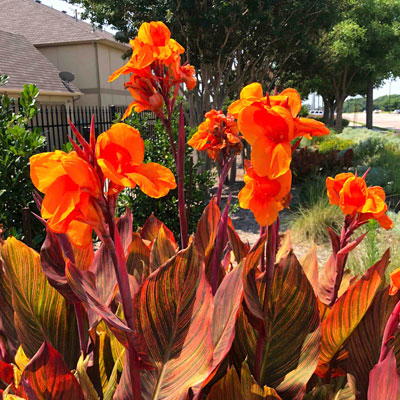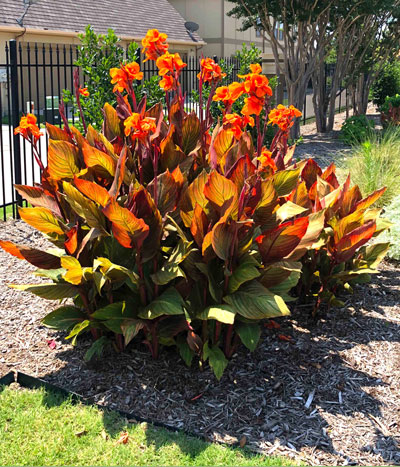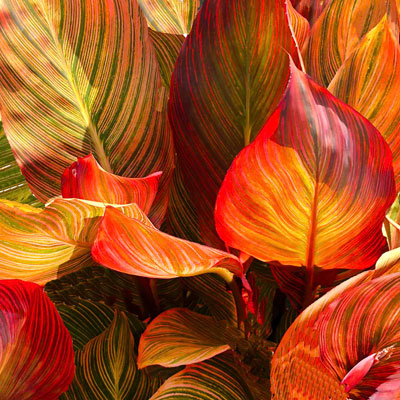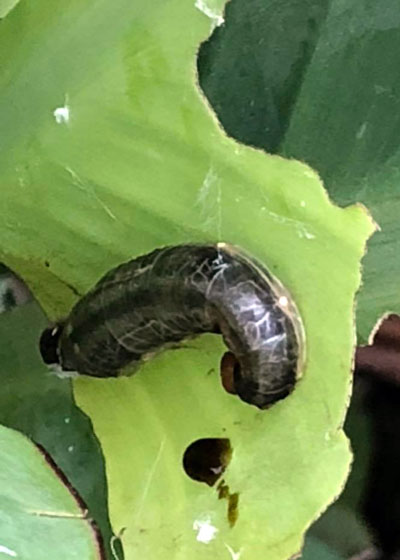For That Big Tropical Splash!
Looking for a lush tropical look beside the pool or patio? Here’s a plant that really brings it full speed ahead.

I remember the first time I saw this showstopping perennial. I was dazzled by its color, but working in the media as I also get to do, I was really impressed by the marketing genius that went into naming it Tropicanna®.

This is a vigorous perennial that peaks out at 5 feet tall. You’ll want to plant it in clumps that will be that wide or wider for the best look in your landscape.
• Put it at the back of your perennial garden. Full sun and moist, highly organic, well-draining soils.

• It has an ultimately strong mix of colors, so place it carefully in your garden design. It’s going to draw attention dramatically, so place it near the focal point of your landscape. Surround it with complementary colors. Oranges, yellows and shades of burgundy are obviously best. Include soft-textured plants to lighten the look.

• Canna leaf rollers will be your prime foe. They’ll tie leaves and flower stems together and leave rows of holes across the leaves. Your best means of dealing with them is to use a systemic insecticide in May so that they’ll never show up in the first place.
• You can buy Tropicanna® cannas growing in pots in many Texas nurseries right now for immediate planting into large patio pots or directly into garden beds. They’re also sold in the spring along with all the other types of canna rhizomes. Tip: A bed filled with just one variety usually makes a better display than a bed of mixed colors and heights.
• Cannas die to the ground with the first killing freeze. They can be dug and divided, then replanted either in the fall or very early in spring before the new growth emerges.
